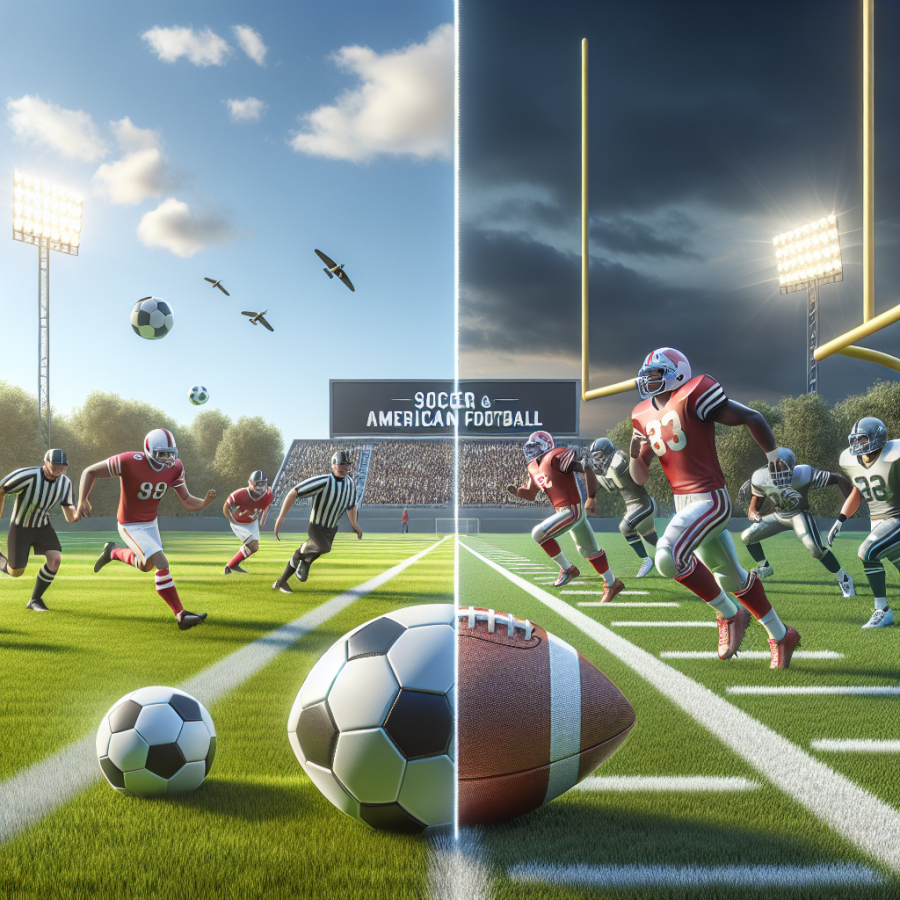Diverging Points: Where Soccer and Football Stand Apart
While soccer and football may seem similar on the surface because of their utilization of a spherical ball and two opposing teams, their differences start to emerge once you delve deeper into the rules, tactics, and culture surrounding each sport.
One of the most significant differences between soccer and football is the ways the players are allowed to interact with the ball. In soccer, players, save for the goalkeeper, are not allowed to touch the ball with their hands. Conversely, in American football, players mainly interact with the ball using their hands. However, there are a few instances where kicking the ball is a necessary part of the game, such as in field goals and punts.
Another diverging point is the number of players allowed on the field. In soccer, each team has eleven players on the field, including the goalkeeper. Meanwhile, a football team has 11 players on the field at any given time. However, football has distinct offensive and defensive units, leading to teams often having 53 players or more in total.
The scoring system in these two sports is also distinct. In soccer, goals are worth one point each, while in football, there are several ways to score, ranging from a one-point extra point to a six-point touchdown.
The field size and shape is another obvious difference. Soccer is played on a rectangular pitch that tends to be larger (up to 120 yards long) than a football field, which is often 100 yards long, with two 10-yard end zones. Besides, football fields come with a more regimented set of lines to denote yardage, while soccer fields typically only have lines to outline the boundaries and center of the field.
Different equipment is used in soccer and football, reflecting the differing levels of contact allowed in each sport. Football is a more dangerous sport in terms of physical contact and, therefore, requires helmets, shoulder pads, and other protective gear. Soccer, being a less contact-heavy game, only requires shinguards in terms of protective equipment.
It's also noteworthy the way time is managed in both sports. Soccer matches are split into two 45-minute halves with added stoppage time, while football is broken down into four 15-minute quarters with frequent clock stoppages.
Finally, the global popularity and cultural significance of these two sports greatly differ. Soccer is the most popular sport globally, with a diverse international following, while the popularity of American football tends to be concentrated within the United States.
Read also:
Designing the Perfect Exercise Schedule for Optimal Fitness
Exploring the Similarities: Unveiling Connections Between Soccer and Football
While it may seem absurd to compare soccer and football because of their distinct differences, you'd be surprised to find out that these two actually have several commonalities. Indeed, drawing parallels between these sports yields fascinating insights about the game dynamics, rules, and origins.
Let's begin with the goal of both games, which is to score points by getting the ball into the opponent's goal area. This basic concept is universally applicable to both soccer and football. Furthermore, they both require similar athletic abilities such as speed, strength, agility, and coordination. In both sports, players must work as parts of a larger team, developing strategies to outplay their opponents and achieve their common objective.
Both Soccer and Football are played in halves. In soccer, matches are divided into two 45-minute halves, while in football games are broken up into two halves, each containing two quarters. Both games also have overtime if the match ends in a tie.
There's a striking similarity in the field shape and markings too. A standard football field is 120 yards long and 53.3 yards wide while a soccer field must be between 100-130 yards long and 50-100 yards wide, making the dimensions of a professional soccer field, in most cases, very similar to that of a football field. Both the sports have markings that help to regulate the play, including the sideline (touchline in soccer), midfield line, end zones (goal line in soccer), and goal areas.
In both sports, there is a penalty for touching the ball with hands. In soccer, anyone except the goalkeeper handling the ball results in a free kick for the other team. In football, if an offensive player other than the quarterback or the receiver who is catching the ball touches the ball how it's considered a penalty. This alignment in rules signifies the primary focus on using body and foot control, rather than hands in these sports.
Off-side rules are crucial in both Soccer and Football, though they work differently. In soccer, players are considered off-side if they are nearer to the opponent's goal line than both the ball and the second last opponent when the ball is played to them. In contrast, football players are offside if they are nearer to the opponent's goal line than the ball when it is snapped. Although the specifics of the off-side rules differ in both sports, the objective is the same: to maintain fair competition and prevent players from gaining an unfair advantage by being over-eager.




